Would you like to teach your children how to read music? Maybe you have no musical knowledge and can’t read music yourself? That’s alright! Let’s discover the basics of reading music together. You’ll be teaching your kids in no time! As always, if you have any questions while reading through, feel free to let me know!
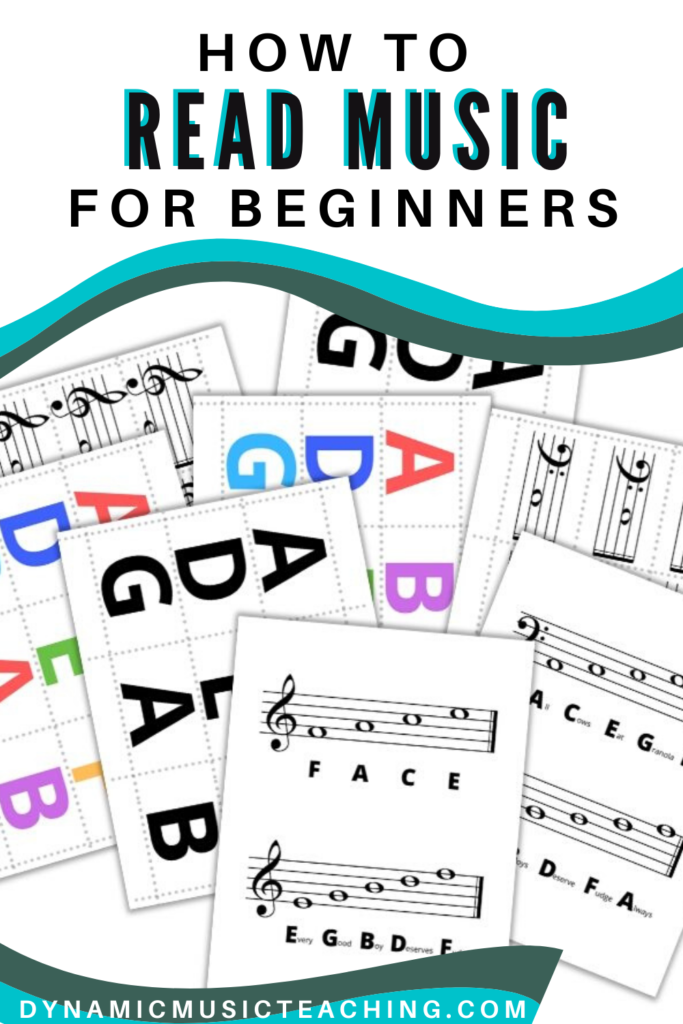
Why should kids learn to read music?
Reading and language skills
Learning music has been shown to improve reading skills and reading readiness in young children.
Note reading is essentially learning to read a new language. It will use and develop similar skills for your child, and help them develop good language and reading skills. For example, we often begin learning to read music notation by recognizing and memorizing individual notes. just like we do with the letters of the alphabet for young children. After this, kids usually progress to recognizing patterns of letters as a larger unit to ease reading. We do the same in music. We begin learning to recognize patterns of notes stepping up and down the music staff and then progress to more complex patterns. Just as kids would in learning to read their native language in school.
Understand the music we listen to
Learning to read music notation helps us to have a deeper understanding of the music we listen to. Just as we might get a better understanding of a story by reading it as well as listening to it. Reading music shows us how the music was constructed and even opens the doors for us to write down our own musical ideas.
Headstart for playing an instrument or joining a choir in the future
Knowing the basics of reading music notation will give your kids a huge headstart in any future musical endeavors. They will be able to easily join a choir and read the music. They will skip over months of the foundational music reading lessons, and their teacher can focus on the foundations of their piano, violin, or guitar skills. If your child has music classes in school, they will whiz through the elementary classes where they learn note names, and if they join a high school band, they will be a mile ahead of the other students.
Being able to read music not only develops language and reading skills, but also opens doors for us. Similar to how learning a second language would.
How to read music
This is a very basic overview of how to read music intended for anyone who might have no prior knowledge of this at all. Sometimes it can be frustrating when everyone assumes we already know the basics. If you do already have the basic knowledge, feel free to skip ahead a few paragraphs for some tips and ideas on how to start teaching your children to read music. On the other hand, if you still have questions, feel free to drop a comment below and I’ll be happy to help!
The music alphabet & staff
Music notes are assigned letters of the music alphabet. The music alphabet consists of only 7 letters: A through G. Music notation is written on the music staff. The music staff is composed of 5 lines, and 4 spaces. Each line or space represents a different note.
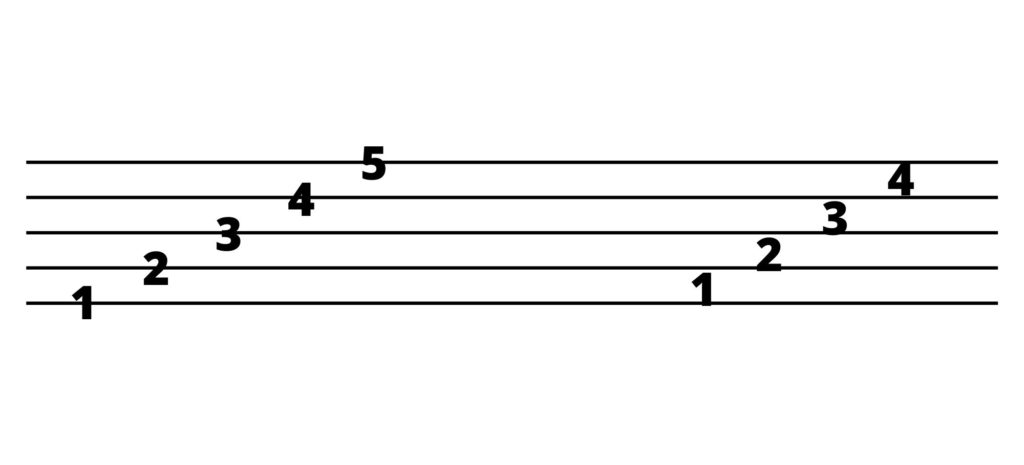
The Clefs
There are a number of different clefs used to write music on. They each make it easier to read music in one range of pitches. For example, the difference between a very high voice and a very low voice singing the same music. The 2 most commonly used clefs, and the ones we will talk about are the treble clef and the bass clef.
The treble clef is used for higher notes, and the bass clef for lower notes. A helpful way to remember this is that the bass clef lives down low in the basement, and the treble clef got in trouble (‘treble’) for climbing up high.
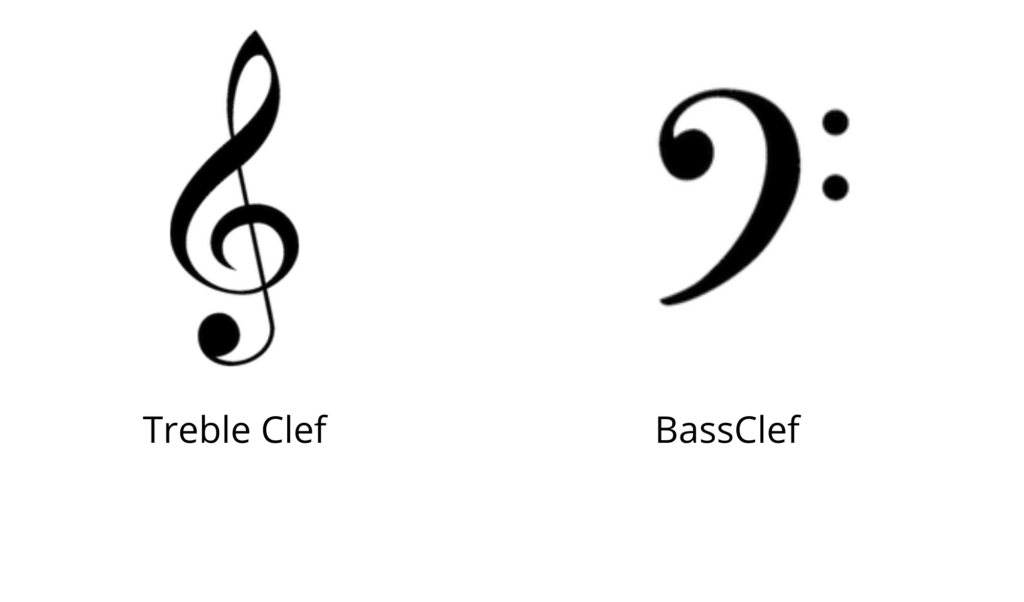
Notes in the Treble Clef
A common way of quickly memorizing the notes on the lines and spaces is to use mnemonics. The spaces spell the word FACE beginning in the bottom space. The mnemonics are best used as a supplement to the other learning activities below, and are especially useful for older children as opposed to those who are still learning to read. Encourage your kids to come up with their own sayings to remember the notes. They will have lots of fun thinking of a silly saying and be more likely to remember it!

Notes in the Bass Clef
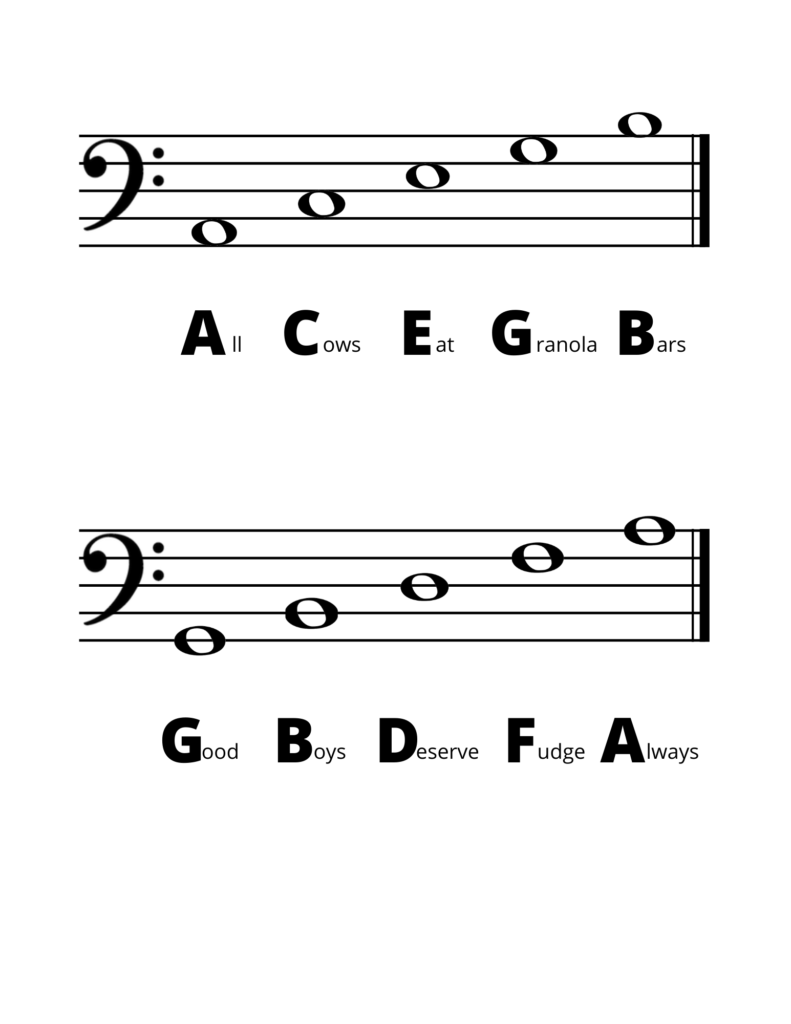
The Grand Staff
When both the treble and bass clef staves are combined together, this forms the grand staff:
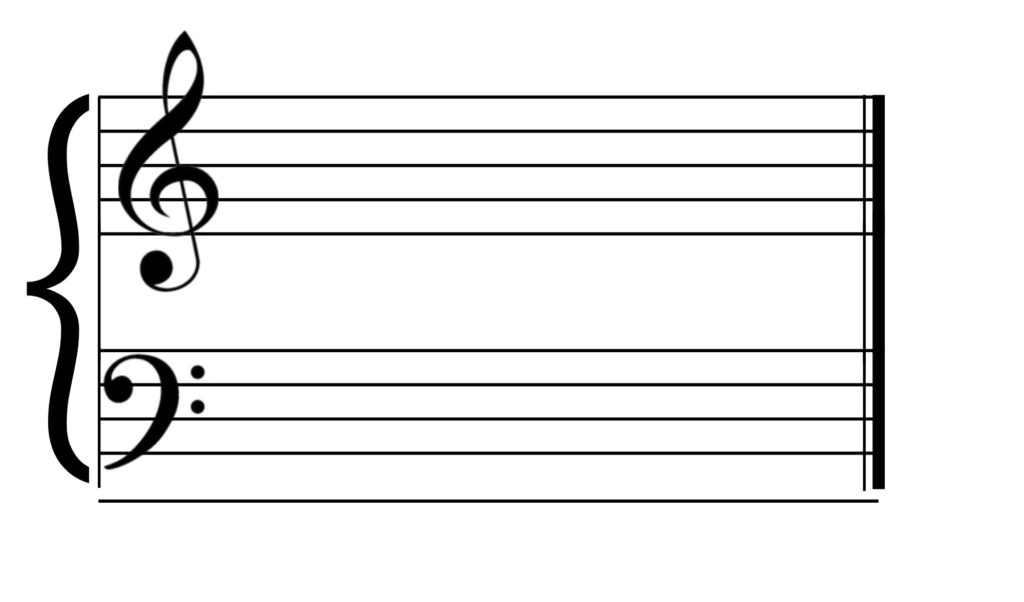
Where to start with young children
The first note to learn is middle C. As its name suggests, it lives in the middle, between the bass clef and the treble clef. If you have a piano, it is the C that is closest to the middle of the keyboard. On the grand staff, it falls in the middle – below the treble staff and above the bass staff. This is the easiest note to recognize, because it is not on any of the 5 lines or 4 spaces of the music staff. It is on its own smaller line (called a ledger line). I like to tell my students that middle C has whiskers like a cat, because cat begins with C, and the line forms the cat’s whiskers.
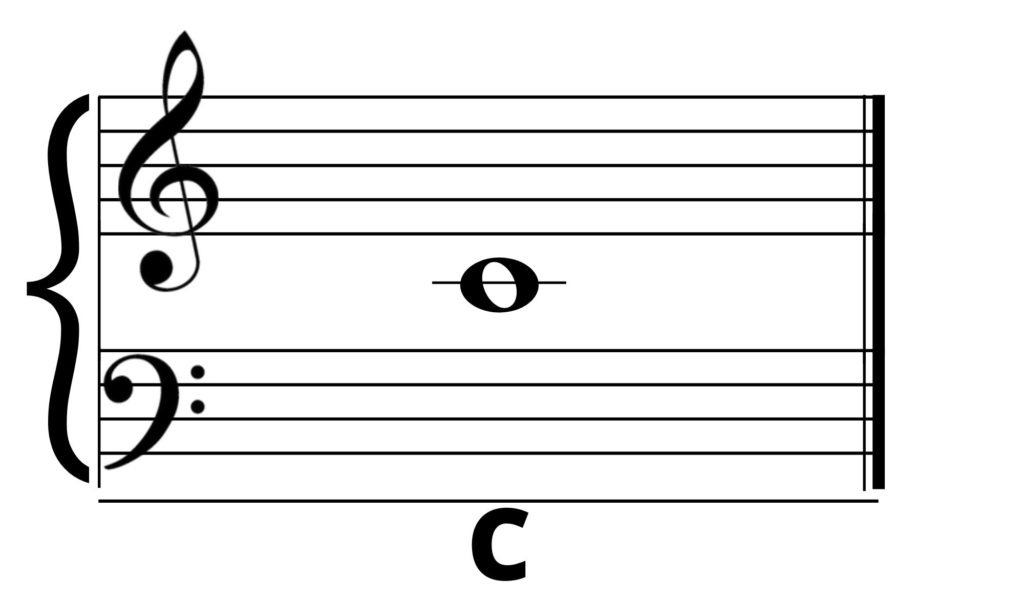
After middle C, we can begin to learn how the notes can step up and down the staff and to recognize patterns.
Notes are stepping up when they move from a line (middle c is on a line) to the next closest space above. Or from a space to the next closest line above. For example, if we step up from middle C, we will find D. And if we step up from D we will find E. On the other hand, if we step down from C, we will find B. The alphabet moves forward as we step up, and backwards as we step down the music staff. If we step up from G, we will find A again (not H). The music alphabet has only 7 letters, A through G, that repeat.
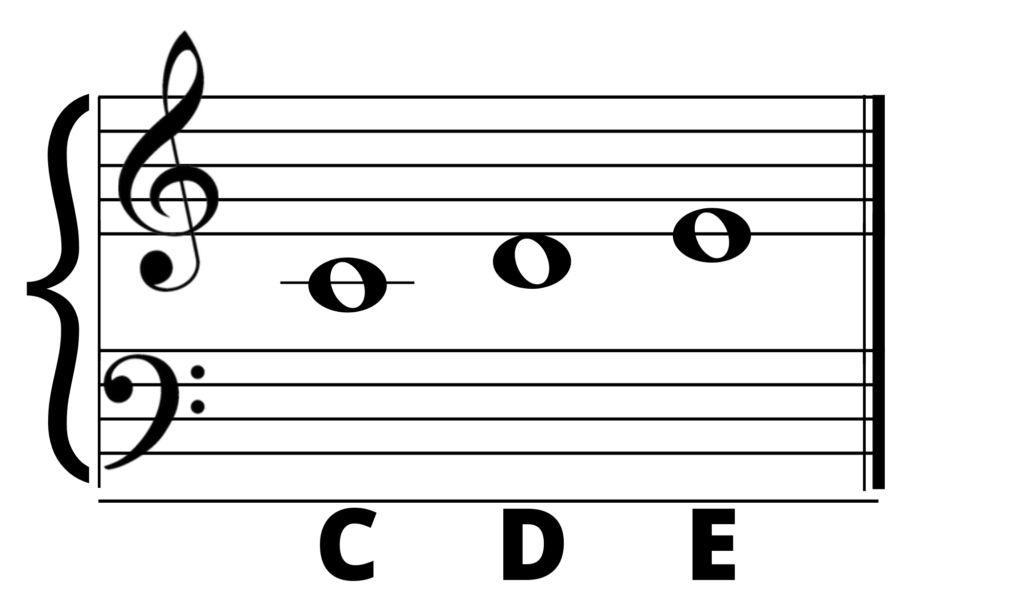
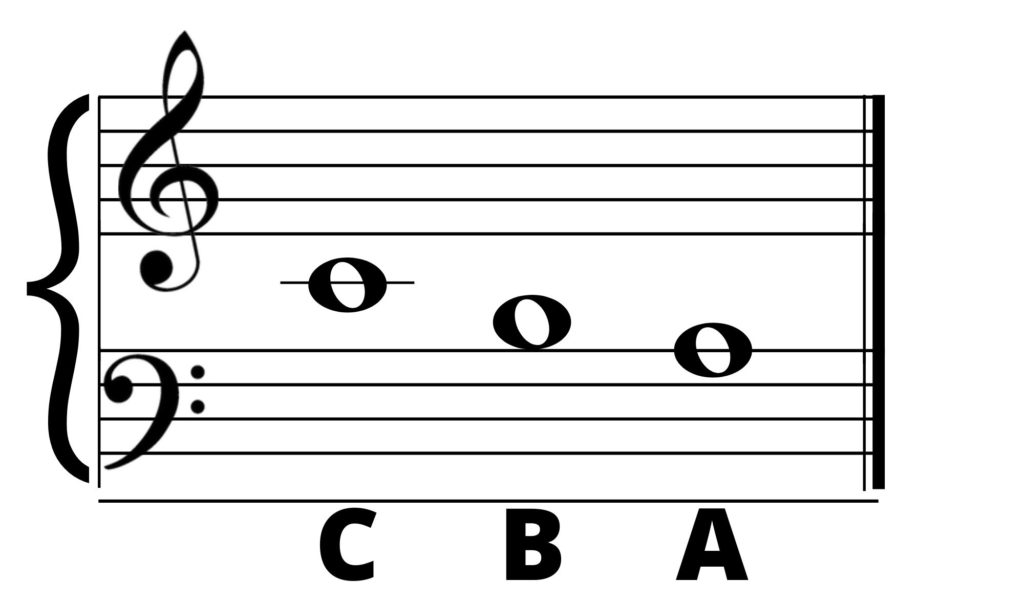
Learning activities for young children
Young children learn best with hands-on activities. Here are a few activity ideas to start teaching your kids to read music notes.
Get a PDF including all the printables needed for the activities below: the ‘Alphabet Snake’ cards, notes on the staff cards for matching, and a cheat sheet of all the note names.
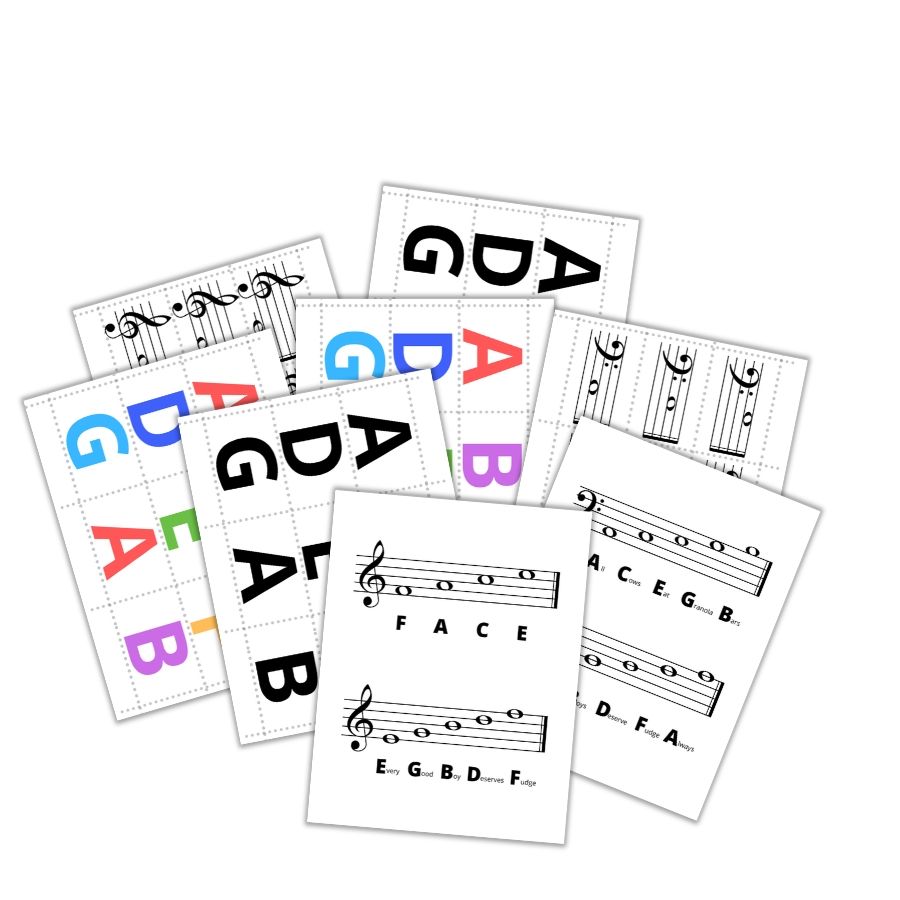
Alphabet sorting cards
Free printable cards for these activities are linked above and below, or you can certainly create your own. I love color, but know you might not want to print in color, so there are both versions included. Print the three pages (or more if you’re up for a lot of cutting!) of whichever version you choose, so your child can create the alphabet snake below and learn to loop the music alphabet past G. Cut each letter apart to make individual letter cards.
Begin to learn about the notes in the music alphabet by sorting the letter cards A through G, continuing with A after the G to build an ‘Alphabet Snake’. Remember, after G comes A again. These are the notes stepping up the music staff.
Can you build the alphabet snake backward beginning with G and ending with A? These are the notes stepping down the staff.
Progress to matching the alphabet cards with the corresponding music note cards. Try arranging them stepping up the staff and then down the staff.
Manipulative matching
Use the same cards as the activity above, but you will also need a small toy or picture beginning with each letter A through G. I use small toy animals I found at the dollar store. You probably already have something similar at home.
Begin by matching the cat to middle C, because it has whiskers like a cat. Find the note a step up, and match it with the dog for D.
You can add in all 3 to match: the toy, the alphabet letter, and the note, to really reinforce the notes. Start slowly, especially with young children. Perhaps begin with just C, D, and E, and gradually add in more notes once these are well learned.
Note Reading Games
Games are a great way to teach kids almost any concept. I’ve created a free printable game for you to reinforce basic note reading skills in the treble clef. Check it out here.
Where to go from here
Keep practicing your music reading skills. Just like any other skill, it will get rusty if left alone. Luckily, there are lots of fun games, worksheets, and even apps available to keep your children’s skills sharp. Remember to get your free printable activities above.
Now that they know the basics of reading music, what will they do with it? Will they start to use those music reading skills to play an instrument? Even something as simple and affordable as the recorder can be a great start! Music, after all, is something that is much more fun to experience than just to read about!
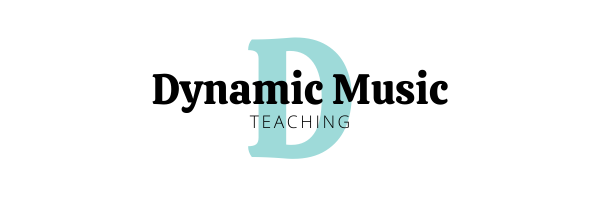
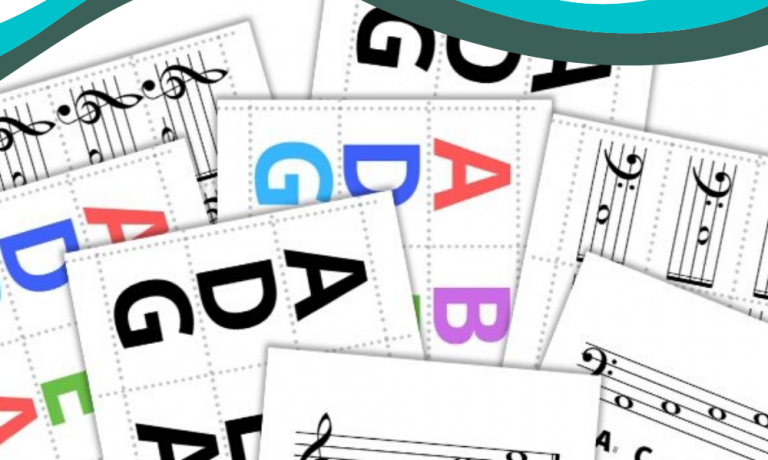



2 Responses
I am Kit, (short for Katharine), owner of the https://themusickit.org/ I teach four instruments, piano, guitar, ukulele and violin to typical Learners and Children with Special needs. I can see myself using some of your materials. Good work! Where are you located if you don’t mind my asking?
You’re the first person I’ve met whose name Katharine is spelled like mine.
Hi Kit!
Thank you so much! I’m located in Alberta, Canada. Wow – 4 instruments must keep you busy! It’s definitely an uncommon spelling for Katharine isn’t it? I don’t think I’ve met another person with the same spelling either. It’s nice to ‘meet’ you – feel free to reach out at ka*******@******************ng.com if you have any suggestions for materials I could make in the future that you’d find useful, of if you’d just like to say hi!